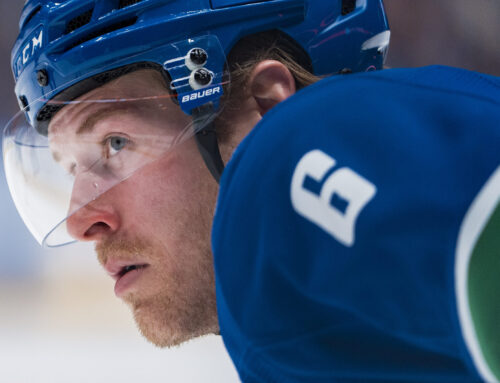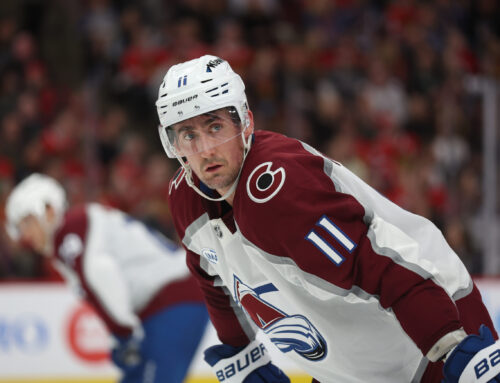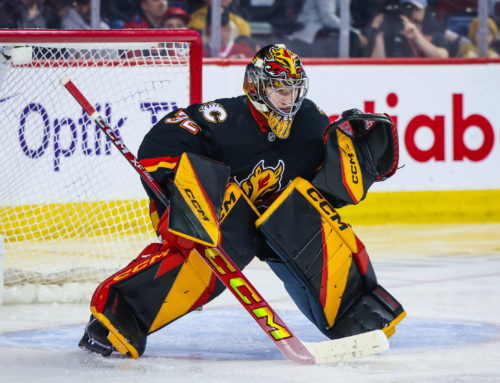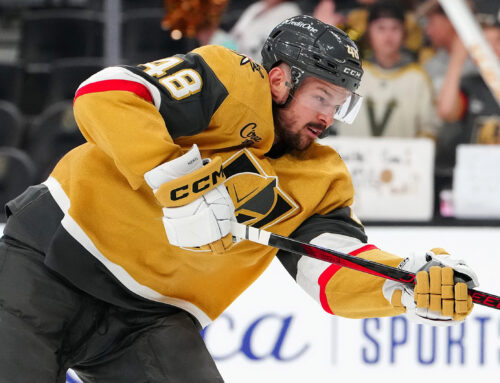
Welcome to Bubble Week. This week all of DobberHockey's weekly columns will feature Bubble Players. We are reviewing players who were not kept in shallower keeper leagues that you should be thinking about drafting, or players who you might be considering keeping in your deep keeper leagues. Now obviously the players you need to draft/keep will depend on the various configuration of your league settings, but staying in theme with our Wild West Summer Series we will be using the same categories of goals, assists, power play points, shots, hits and blocks.
Also if you need to play some catch up on some of the great team reviews that have been happening so far this summer check out the past articles for the Wild West Series, and the Eastern Edge Series. Also make sure to grab your copy of the Fantasy Guide, for up to date projections and extensive analysis, out August 1st.
Now on to the players.
Once we remove all the likely keepers from the pool, there are many fewer exciting players at the center position on the west coast. If we do some ranking for 2017-18 stats based on the categories above, the players closest to RNH in value are Carl Soderberg, Paul Stastny and Mikael Backlund. Now technically Backland had the highest value, and there is a lot to like about Stastny, but RNH is the most exciting of the lot.
RNH’s 2017-18 is a bit deceiving as he only played 62 games so his 48 points looks a little less interesting than Stastny’s 53. The point pace he maintained though, is the highest he has managed since his rookie year, and was by far the highest of the bunch.
|
Games Played |
Goals |
Assists |
Points |
Points/ Game |
Shots |
Sht% |
Hits |
PPlay Points |
Blocks |
|
62 |
24 |
24 |
48 |
0.77 |
150 |
16 |
43 |
9 |
39 |
Before jumping to too many conclusions though let’s take a look red flags, and there are some. First off we see a shooting percentage of 16%. Now that isn’t a crazy shooting percentage for more elite scorers, but RNH’s career average is closer to 12%. That would be a potential drop of six goals off of the 2017-18 total. RNH also has an inflated PDO* and IPP* when compared to his previous years numbers. These numbers could indicate that this career high point pace was due to some favorable luck and that it is not going to be sustainable next year.
The thing is, I am not so sure that is true. RNH was having a decent season for the first two quarters. He was seeing on average between one and two minutes on the second power play, about 17 minutes of ice time per game, and scoring at about a .71 point pace over the first 42 games. He was then injured for a bit and then upon his return his ice time jumped to 19 minutes, he was seeing an average of two minutes per game on first power play, oh and his even strength and power play line mate was Connor McDavid. It resulted in him accumulating 17 points over his final 16 games.
Let’s play a little game, we will call it Before Connor (BC) and After Connor (AC). Now the data isn’t perfect, but you get the idea.
|
|
BC |
AC |
|
Even Strength Points Per Game |
0.43 |
0.54 |
|
Power Play PPG |
0.18 |
0.23 |
|
Shots Per Game |
2.4 |
2.8 |
That is a potential increase of about nine even strength points, and four power play points for 13 total points through a season. His career average is about 52 points a season (though with varying numbers of games played), so 65 sounds pretty appealing. The moral of the story is playing with Connor McDavid is great. An change in IPP or shooting percentage is typically a problem if there isn’t a good explanation as to why there is that change. If there isn’t an explanation the number is likely going to fall back to that player’s norm. In this case though that explanation seems to be increasing time on the first power play, more time on ice, and of course Connor McDavid.
Ryan Nugent-Hopkins slightly overperformed his career marks last year, however he has spent his career not playing with McDavid. This 2017-18 performance is taste of what life could be like playing with him. I would also add that if he continues lining up with McDavid it is possible he gets winger eligibility as well, which could be a nice bonus. Now there is certainly is no guarantee that he spends a significant chunk of 2018-19 with McDavid, but RNH does seem to have the inside track at the moment and it is an upside that certainly no other center options have, particularly at this depth.
I cannot say enough about Colton Parayko. If your league counts stats like described above, you need him. Take a look at his 2017-18 season.
|
Games Played |
Goals |
Assists |
Points |
Points/ Game |
Shots |
Sht% |
Hits |
PPlay Points |
Blocks |
|
82 |
6 |
29 |
35 |
0.43 |
212 |
2.8 |
120 |
9 |
141 |
What this stat line doesn’t tell you is that he has increased his time on ice, power play time, shots, blocks, and hits every year over the last three years. His point per game pace has remained relatively stable over that time, and he isn’t necessarily primed to take over the power play one job from Alex Pietrangelo (even Vince Dunn got a longer look than Parayko). That means likely 35 points is going to be about what you can expect from him going forward but it is in the peripheral categories where Parayko is so valuable.
In 2017-18 there were four players who averaged 2.6+ shots per game, 1.5+ hits per game, and 1.7+ blocks per game (Shea Theodore, Jacob Trouba and Erik Johnson were the others). Of those four players Colton Parayko is the only player to do it over the full season. Weber of course is injured for the start of next year so don’t forget him, but Parayko was the most consistent and the valuable of the remaining three in 2017-18.
The Blues made quite a few off season moves, and have added depth to their forward roster. There was less intrigue on the defensive end, but that increased depth could mean a more potent second power play, which has featured Parayko.
All signs point to continues value from Parayko, so don’t miss out.
Bonus:
Alex Goligoski and Joe Thornton
Goligoski was recently featured in a Wild West column and all that was said there certainly still applied so check up on that, but I also couldn’t help but mention Jumbo Joe. Thornton will be 39 when this season starts at a time when the focus of the team seems to be moving on. They have just signed Evander Kane, and Joonas Donskoi, Tomas Hertl, Timo Meier, and Kevin LaBanc appear poised to lead the team. In your points league though it may still be a good idea to throw the dice and hope for one more decent season.
Once we eliminate all of the players that are likely kept in leagues (about the top 150), Thornton had the highest point per game pace in 2017-18. He has had knee injuries, was limited to 47 games and had a high shooting percentage, but the fact remains that he lead the Bubble Players in point pace.
Next year though? Well he is now 39, and over the last five years players aged 39 and older have managed to score .7 points per game or higher four times (three separate players). If we include age 38 seasons there are six instances and five players. One of those players of course is Joe Thornton, which does give us some hope that he could do it again.
Obviously there are a lot of questions marks here; age, deployment, injury history, and he is likely going to miss some time at some point. Maybe don’t jump on him immediately out of the gate, but when the price is right he may still be able to provide you points at a value.
Next week we are back to our regularly scheduled programming featuring Dallas.
Thanks for reading.
*PDO – combination of shooting percentage and save percentage while the player is on the ice
*IPP – Percent of goals that player gets a point on while he is on the ice.





 WSH
WSH CAR
CAR WPG
WPG DAL
DAL TOR
TOR DET
DET MIN
MIN EDM
EDM VGK
VGK FLA
FLA PIT
PIT
